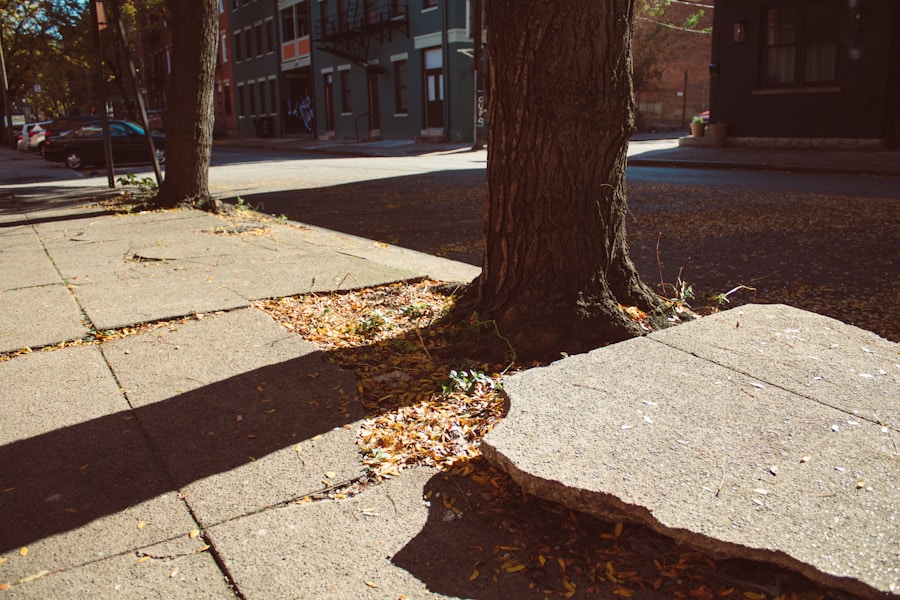Winter can take a toll on parking lots, causing a range of issues that can affect both the appearance and functionality of the space. The freezing and thawing cycles that occur during the winter months can lead to cracks, potholes, and other forms of damage. Additionally, the use of de-icing chemicals and snow removal equipment can further contribute to wear and tear on parking lot surfaces. Understanding the impact of winter on parking lots is crucial for property owners and managers, as it can help them anticipate and address potential issues before they become more serious problems.
In addition to physical damage, winter weather can also impact the safety and usability of parking lots. Snow and ice accumulation can create hazardous conditions for pedestrians and drivers, increasing the risk of slips, falls, and accidents. This can not only pose a liability risk for property owners, but also result in inconvenience and frustration for customers, tenants, and employees. By understanding the impact of winter on parking lots, property owners and managers can take proactive measures to mitigate potential damage and ensure the safety and functionality of their parking facilities.
Assessing the Damage: Common Winter-Related Parking Lot Issues
When winter weather takes its toll on parking lots, a range of issues can arise that require attention and repair. Common winter-related parking lot issues include cracks, potholes, surface deterioration, and drainage problems. Cracks can form as a result of freeze-thaw cycles, allowing water to seep into the pavement and further exacerbate the damage. Potholes can also develop due to the expansion and contraction of pavement materials caused by fluctuating temperatures. Surface deterioration, such as spalling and raveling, can occur as a result of exposure to de-icing chemicals and abrasive snow removal techniques. Additionally, drainage problems can arise when snow and ice melt, leading to standing water and potential flooding.
Assessing the damage caused by winter-related parking lot issues is an important first step in developing a plan for repair and maintenance. Property owners and managers should conduct regular inspections of their parking lots to identify any signs of damage or deterioration. This can include visual inspections, as well as more in-depth assessments using tools such as ground-penetrating radar or infrared thermography. By understanding the extent of the damage, property owners and managers can make informed decisions about the best course of action for repairing and winter-proofing their parking lots.
Step-by-Step Guide to Repairing Cracks and Potholes
Repairing cracks and potholes in parking lots is essential for maintaining the safety and functionality of the space. Fortunately, there are several effective techniques for addressing these common winter-related issues. One common method for repairing cracks is to fill them with a flexible sealant that can expand and contract with the pavement as it undergoes temperature changes. This helps prevent water from seeping into the cracks and causing further damage. For larger cracks and potholes, patching materials such as asphalt or concrete can be used to fill in the damaged areas and restore the integrity of the pavement.
When repairing cracks and potholes in parking lots, it’s important to follow a step-by-step process to ensure that the repairs are effective and long-lasting. This typically involves cleaning the damaged area, applying a primer or bonding agent, filling in the crack or pothole with the appropriate patching material, and then compacting and smoothing the surface to create a seamless finish. In some cases, it may also be necessary to apply a sealant or protective coating to further enhance the durability of the repair. By following a systematic approach to repairing cracks and potholes, property owners and managers can effectively address winter-related damage and prolong the lifespan of their parking lots.
Choosing the Right Materials for Winter-Proofing Your Parking Lot
Selecting the right materials for winter-proofing your parking lot is crucial for ensuring its longevity and durability in the face of harsh winter weather. When it comes to repairing cracks and potholes, it’s important to choose patching materials that are specifically designed for use in cold weather conditions. This typically includes asphalt-based products that can withstand temperature fluctuations without cracking or deteriorating. Additionally, sealants and protective coatings should be selected based on their ability to resist damage from de-icing chemicals and other winter-related factors.
In addition to patching materials, property owners and managers should also consider using specialized snow-melting products to help prevent ice accumulation on their parking lots. These products are designed to melt snow and ice on contact, reducing the need for manual snow removal and minimizing the risk of slip-and-fall accidents. Furthermore, investing in high-quality drainage systems can help prevent water from pooling on the surface of the parking lot, reducing the risk of flooding and water damage during thaws. By choosing the right materials for winter-proofing their parking lots, property owners and managers can minimize the impact of winter weather and extend the lifespan of their pavement.
Implementing Preventative Maintenance Measures
Implementing preventative maintenance measures is essential for protecting parking lots from winter-related damage and ensuring their long-term functionality. Regular cleaning and sweeping can help remove debris and prevent it from accumulating on the surface of the pavement, reducing the risk of deterioration. Additionally, applying sealants and protective coatings can help create a barrier against moisture, de-icing chemicals, and other environmental factors that can cause damage to parking lot surfaces.
In addition to surface maintenance, property owners and managers should also prioritize regular inspections and repairs to address any signs of wear or damage before they become more serious issues. This can include filling in cracks, patching potholes, and addressing drainage problems to prevent water from pooling on the surface of the parking lot. Furthermore, implementing a comprehensive snow and ice management plan can help minimize the impact of winter weather on parking lots, reducing the risk of accidents and damage. By implementing preventative maintenance measures, property owners and managers can proactively protect their parking lots from winter-related issues and ensure their continued functionality.
Snow and Ice Management Techniques for Parking Lots
Snow and ice management techniques are essential for maintaining safe and accessible parking lots during the winter months. Property owners and managers should develop a comprehensive plan for snow removal that includes regular plowing, shoveling, and de-icing to keep parking lots clear of snow and ice. This typically involves using specialized equipment such as snow plows, shovels, salt spreaders, and snow blowers to effectively remove snow from the surface of the pavement.
In addition to manual snow removal techniques, property owners and managers should also consider investing in snow-melting products that can help prevent ice accumulation on their parking lots. These products are designed to melt snow and ice on contact, reducing the need for manual snow removal and minimizing the risk of slip-and-fall accidents. Furthermore, implementing proper drainage systems can help prevent water from pooling on the surface of the parking lot, reducing the risk of flooding during thaws. By implementing effective snow and ice management techniques, property owners and managers can ensure that their parking lots remain safe and accessible throughout the winter months.
Hiring Professional Help: When to Call in the Experts
While many winter-related parking lot issues can be addressed through proactive maintenance and repair efforts, there are times when it’s necessary to call in professional help. Property owners and managers should consider hiring experts for tasks such as crack sealing, pothole patching, sealcoating, and other specialized repairs that require professional expertise. Additionally, professional snow removal services can help ensure that parking lots are cleared of snow and ice in a timely manner, reducing the risk of accidents and damage.
Furthermore, property owners and managers should consider consulting with pavement maintenance professionals to develop a comprehensive plan for winter-proofing their parking lots. These experts can provide valuable insights into effective maintenance techniques, materials selection, and preventative measures that can help protect parking lots from winter-related damage. By hiring professional help when necessary, property owners and managers can ensure that their parking lots remain safe, functional, and visually appealing throughout the winter months.
In conclusion, understanding the impact of winter on parking lots is crucial for property owners and managers who want to protect their investment and ensure the safety and functionality of their parking facilities. By assessing common winter-related issues such as cracks, potholes, surface deterioration, and drainage problems, property owners can develop a plan for repair and maintenance that addresses these issues effectively. Choosing the right materials for winter-proofing parking lots is essential for ensuring their longevity and durability in harsh weather conditions. Implementing preventative maintenance measures such as regular cleaning, inspections, repairs, snow removal techniques, and professional help when necessary can help protect parking lots from winter-related damage while ensuring their continued functionality. By taking proactive steps to address winter-related issues, property owners can minimize potential damage while maintaining safe and accessible parking facilities for customers, tenants, employees, and visitors alike.

